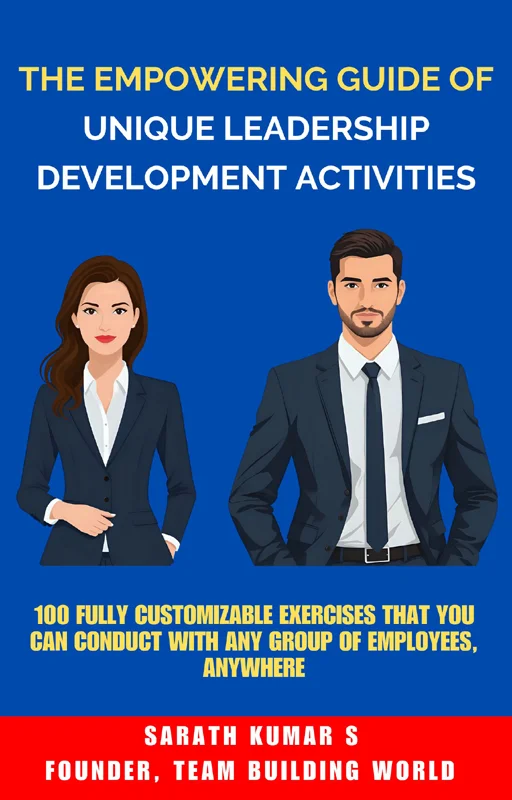12 Leadership Development Strategies for Organizations
Are you in search of some leadership development strategies for your organization?
Effective leadership is vital for the success and growth of any organization. It’s not enough to simply have leaders in place; continuous development and improvement are essential to drive innovation, inspire teams, and navigate through ever-changing business landscapes.
In this article, we will explore 12 powerful strategies that organizations can implement to enhance leadership development. Implementing these strategies will not only benefit the current executives but also develop future leaders within the organization.
Why is Leadership Development Important?
Before we dive into the strategies, let’s understand why leadership development is crucial for organizations.
Succession planning: It ensures that there is a pipeline of capable leaders ready to step in when current executives retire or leave the organization.
Employee retention and engagement: Leaders who are invested in their own growth and development are more likely to engage and retain employees, creating a positive work culture.
Innovation and adaptability: Continuous development helps leaders stay up-to-date with industry trends and lead their teams through change and uncertainty.
Now, let’s explore some strategies that organizations can implement to cultivate effective leaders.
12 Leadership Development Strategies for Organizations
Here are some key strategies that organizations can implement to foster effective leadership development.
#1. Establish a Clear Vision and Values
Establishing a clear vision and values is paramount for effective leadership enhancement. Leaders must align their own goals with the organization’s vision to guide their teams towards success. Additionally, they should embody the organization’s values and lead by example to inspire and motivate their teams.
You can also read: How to Create a Strong Executive Development Plan (EDP)?
#2. Focus on Soft Skills Development
Leadership is not just about technical skills; it also requires strong soft skills. Soft skills such as communication, emotional intelligence, and adaptability are crucial for effective leadership. Organizations should provide opportunities for individuals to develop these skills through training programs, workshops, or coaching sessions.
You can also read: 11 Leadership Development Activities for Employees
#3. Implement Succession Planning
Succession planning ensures that there is a clear path for current employees to advance into executive roles when opportunities arise. It also allows organizations to identify and groom future leaders within the company. By implementing a succession plan, organizations can ensure continuity and maintain strong leadership even during times of transition.
#4. Encourage Continuous Learning
Developing leaders should not be a one-time event; it should be an ongoing process. Organizations can encourage continuous learning by providing resources such as books, webinars, or online courses for employees to expand their knowledge and skills. Additionally, mentoring programs can also be effective in fostering continuous learning.
#5. Provide Feedback and Recognition
Feedback is essential for growth and development. Leaders should receive regular feedback on their performance to identify areas for improvement and recognize strengths. This encourages them to continue developing their skills and motivates them to perform at their best. Organizations should also provide recognition for accomplishments and successes to boost morale and reinforce desired behaviors.
#6. Promote Cross-Functional Experience
Cross-functional experience allows people to gain a deeper understanding of their organization as a whole. It also helps in breaking down silos and promoting collaboration among different departments. Organizations can create cross-functional projects or job rotations to provide leaders with a well-rounded perspective and skill set.
#7. Develop Emotional Intelligence
Emotional intelligence is a critical skill for effective leadership. It involves understanding and managing emotions, both in oneself and others. Organizations should provide training and workshops on emotional intelligence to help leaders build stronger relationships with their team members, improve communication, and handle conflicts more effectively.
#8. Create a Culture of Innovation
Effective leaders must be able to drive innovation within their teams and workplaces. Organizations should create a culture that encourages creativity, risk-taking, and continuous improvement. This can be achieved by providing resources for brainstorming sessions, promoting open communication, and recognizing innovative ideas.
#9. Embrace Diversity and Inclusion
Effective leadership requires an understanding and appreciation of diversity within teams. Organizations should create a culture that embraces diversity and inclusion to foster creativity, innovation, and collaboration. This can be achieved through inclusive hiring practices, diverse training programs, and promoting open communication.
#10. Lead by Example
The most impactful strategy for current executives is to lead by example. This means practicing what they preach, being transparent and ethical in decision-making, and continuously developing themselves as leaders. When others see their superiors actively striving for growth and improvement, it inspires them to do the same.
#11. Encourage Hands-on Learning
Leadership development should include practical, hands-on experiences. Organizations can provide opportunities for leaders to take on new projects or lead teams to gain real-world experience and challenge themselves. This allows them to apply their learnings in a meaningful way and develop crucial skills such as decision-making and problem-solving.
#12. Foster a Growth Mindset
Lastly, organizations should foster a growth mindset within their team. A growth mindset is the belief that one’s abilities can be developed through hard work, dedication, and perseverance. By promoting a growth mindset, leaders are encouraged to continuously improve and embrace challenges rather than shy away from them.
How can You Develop a Winning Strategy?
Developing a winning strategy for leadership development requires a thorough understanding of the organization’s culture, values, and goals. It also involves considering the needs and strengths of current and future leaders.
Here are some steps that can help in developing a winning strategy:
Assess current leadership: Begin by evaluating the current leaders within your organization. Identify their strengths, weaknesses, and areas for improvement.
Identify key competencies: Determine what skills, behaviors, and traits are necessary for effective leadership within your organization.
Consider future needs: Anticipate future challenges and changes within the organization to identify what skills and competencies will be essential in future leaders.
Create a development plan: Develop a personalized development plan for each individual leader based on their needs and future goals.
Offer resources and opportunities: Provide resources such as training programs, workshops, mentoring, cross-functional experience, and hands-on learning to support leaders in their development.
Want Some Unique Leadership Development Activities?
If you want some unique activities to equip your employees with leadership skills, qualities, and mindset, you can get my new e-book:
Or Want Some Unique Team Building Activities?
If you want some unique activities for your employees (both in-person and virtual), you can get my new e-book:
Final Words
Effective leadership enhancement is essential for the growth and success of organizations. By implementing these strategies, organizations can foster a strong culture and develop a pipeline of capable and visionary leaders. Remember, developing executives is a continuous process, and it requires the commitment of both individuals and organizations. Start implementing these strategies today to see positive outcomes in your organization’s journey.
FAQ: Leadership Development Strategies
You might have these questions in mind.
Can anyone become a great leader?
Yes, with dedication and continuous development, anyone can become a great leader. Leadership skills are not innate; they can be learned and developed over time.
Is leadership development only for people in formal executive positions?
No, it is beneficial for anyone who wants to improve their leadership skills, regardless of their current position or title within an organization. Personal growth and development can help individuals stand out as leaders in any role they hold.
How often should organizations provide training for leadership enhancement?
Leadership enhancement should be an ongoing process rather than a one-time event. Organizations should provide regular opportunities for training, feedback, and hands-on experiences to continuously develop their leaders. The frequency of these opportunities may vary depending on the organization’s needs and resources.
Can organizations tailor leadership development programs for specific departments or roles?
Yes, these programs should be tailored to fit the unique needs and challenges of different departments and roles within an organization. This can help individuals develop skills that are directly related to their responsibilities and foster growth in areas that need improvement. It also allows for a more personalized approach to leadership enhancement.
How important is it for leaders to have emotional intelligence?
Emotional intelligence is crucial for effective leadership as it helps people understand and manage their emotions and those of others. It also plays a significant role in building strong relationships, promoting teamwork, and handling conflicts. Organizations should prioritize developing emotional intelligence in their leaders to foster a positive and productive work environment.

